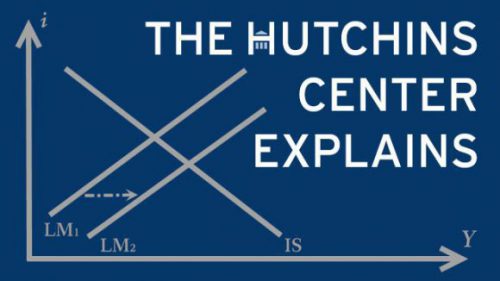The Tax Cuts and Jobs Act (TCJA) of 2017 included significant changes to the tax code. Many of these changes were enacted on a temporary basis and are set to expire at the end of 2025. Former President Donald Trump favors extending all the expiring provisions. Vice President Kamala Harris hasn’t been specific, but says she opposes any tax increases on people making less than $400,000, which implies extending some provisions of the TCJA.
Which are the most significant expiring provisions?
Standard deduction: The TCJA increased the standard deduction and eliminated personal exemptions. For example, if the TCJA expires as under current law, the standard deduction for a married couple will be approximately $16,525 in 2026, while the personal exemption will be about $5,275. If this provision of the TCJA were extended through 2026, the standard deduction would be roughly $30,725, and the personal exemption would be zero.1
Individual income tax rates: The TCJA lowered marginal income tax rates throughout much of the income distribution. For example, the TCJA cut the top marginal tax rate from 39.6% to 37%. These rates will increase to pre-2017 levels if the TCJA expires.
State and local tax (SALT) deduction: The TCJA imposed a $10,000 cap on the deductibility of state and local taxes (SALT). If this provision of the TCJA expires, all state and local property taxes and income taxes (or sales taxes in states without income taxes) will be deductible, primarily benefiting high-income taxpayers in high-tax states.
Child Tax Credit: The TCJA increased the tax credit for each child under 17 from $1,000 to $2,000 (although the maximum credit that can be refunded only increased from $1,000 to $1,400 per child). It also increased the income thresholds at which the credit phases out. The child tax credit will fall back to $1,000 if the TCJA expires. The child tax credit is not indexed for inflation, so the real value of the credit should this provision of the TCJA expire will be about 25% lower than it was in 2017.
Deduction for small business income: The TCJA provided a 20% deduction for qualified pass-through income (section 199A) for sole proprietorships, partnerships, and S-corporations. If the TCJA expires, this deduction will no longer be available.
Alternative minimum tax (AMT): The TCJA increased the AMT exemption amounts and raised the income levels at which the exemptions phase out, resulting in fewer taxpayers liable for the AMT. If this provision of the TCJA expires, the 2026 AMT exemption for married couples filing jointly will be about $110,075, compared to about $140,300 if the provision is extended.
Estate taxes: The TCJA doubled the estate tax exemption. If this provision expires the exemption in 2026 will be about $14.3 million for married couples, compared to $28.6 million if the provision is extended.
Which provisions of the TCJA were not enacted on a temporary basis?
Corporate provisions: Most of the TCJA’s provisions that affect corporations—including the reduction in the corporate tax rate from 35% to 21%— do not sunset. One exception is the provision that permitted a 100% bonus depreciation deduction for assets with useful lives of 20 years of less. This deduction began being phased out in 2023 and will be fully phased out by 2026.
Individual and estate provisions: While most of the provisions affecting individuals and estates do sunset, one exception is the change in inflation adjustment methodology, which was enacted on a permanent basis. In particular, the IRS is now required to use the chained CPI-U rather than the CPI-U to index the various provisions of the tax code that are inflation-adjusted—including the tax brackets and the standard deduction. This measure typically rises more slowly than the CPI, resulting in increased tax revenues.
How much additional revenue is raised by the expiration of the TCJA’s individual tax policies?
In May 2024, the Congressional Budget Office estimated that the expiration of the TCJA’s individual tax provision would raise government revenues by $4.6 trillion from FY2025 – 2034, about 1.3% of projected GDP.
What are the distributional impacts of allowing the TCJA’s provisions to expire?
The TCJA provided the largest benefits to the richest taxpayers, and so the expiration of many of its provisions will disproportionately affect the rich. The table below reports estimates from the Tax Policy Center of the distributional effects of the expiration of the TCJA provisions.2 Households in the lowest income quintile will pay roughly one-half percent more of their income in taxes if all the provisions of the TCJA expire, while households in the top 1% will pay an additional 3.1% of their income in taxes.
-
Acknowledgements and disclosures
The Brookings Institution is financed through the support of a diverse array of foundations, corporations, governments, individuals, as well as an endowment. A list of donors can be found in our annual reports published online here. The findings, interpretations, and conclusions in this report are solely those of its author(s) and are not influenced by any donation.
-
Footnotes
- For all the calculations in this explainer, we assume that the CPI-U rises at a 2.5% annual rate though August 2024, and at a 2% annual rate thereafter.
- The TPC tables report the effects of extending the tax provisions; we recalculate the percent change in after-tax income so that it reflects the effects of allowing them to expire relative to extending them.






Commentary
Which provisions of the Tax Cuts and Jobs Act expire in 2025?
September 5, 2024